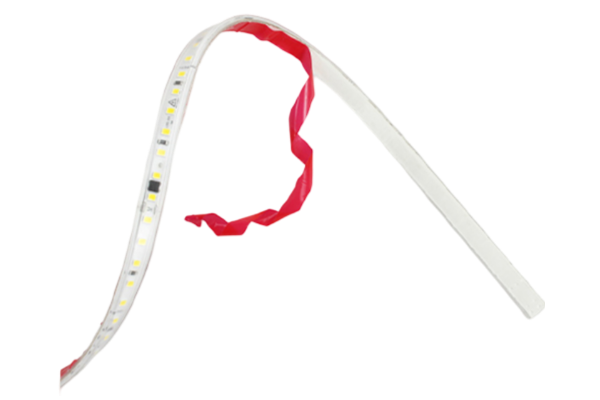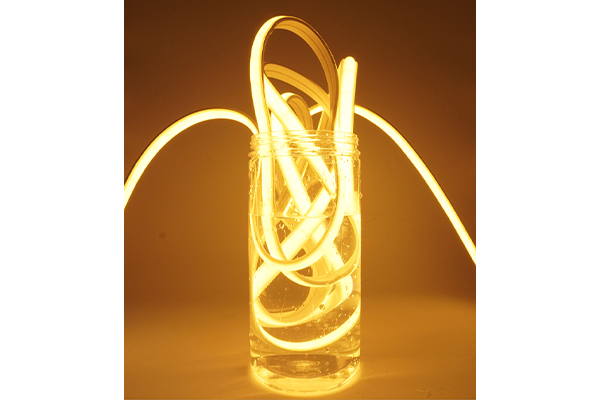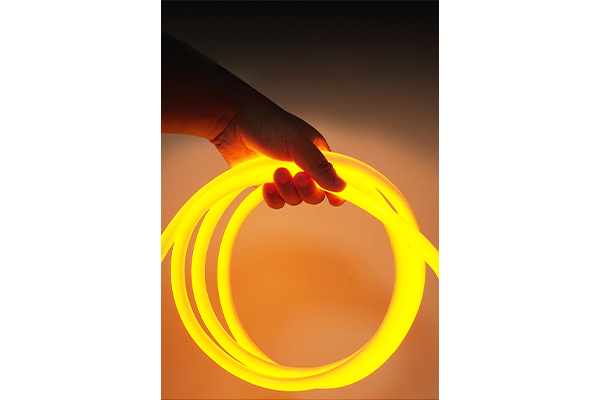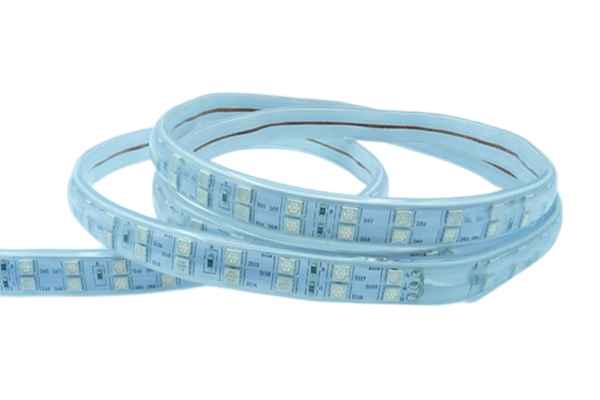What advantages do high-voltage light strips offer in outdoor lighting projects?
Release Time : 2025-10-01
With the booming development of urban nightscapes, outdoor lighting has become a crucial tool for enhancing a city's image and creating a commercial atmosphere. Among numerous lighting products, LED light strips are widely used due to their flexibility, aesthetics, and energy efficiency. In long-distance, large-scale outdoor lighting scenarios, high-voltage light strips offer greater environmental adaptability and engineering advantages compared to low-voltage light strips, making them the preferred solution for large-scale lighting projects.
1. Long-distance power supply, reduced voltage drop, and uniform brightness
Outdoor lighting projects often require long-distance illumination of building outlines, bridges, and landscaped areas. When low-voltage light strips transmit light over long distances, the voltage gradually drops due to line resistance, resulting in a noticeable "bright start, dark end" phenomenon, severely impacting the visual effect. High-voltage light strips, on the other hand, operate at a higher voltage and lower current. For the same power consumption, line losses are significantly reduced, enabling stable power supply over longer distances without the need for frequent relays or power supplies. This not only ensures highly uniform brightness across the entire strip, but also avoids color shift caused by voltage drop, ensuring the overall aesthetic and consistency of nightscape lighting.
2. Simplified Power Supply Layout, Reduced Installation and Maintenance Costs
For large-scale outdoor projects, power supply layout is a critical construction step. Low-voltage light strips, due to their short power supply distances, require power supplies or repeaters every few or even dozens of meters. This results in numerous power supplies, complex wiring, and a long construction period. High-voltage light strips, on the other hand, can support continuous installations of up to 50 meters or even longer, significantly reducing the number of power adapters and junction boxes required. This not only simplifies electrical design and reduces material and labor costs, but also reduces potential points of failure, improving overall system reliability and greatly facilitating subsequent maintenance.
3. Stronger Environmental Tolerance, Adapting to Complex Outdoor Conditions
Outdoor environments are complex and unpredictable, and light strips are subject to long-term exposure to harsh conditions such as sun, rain, and high and low temperatures. High-voltage light strips are typically encased in a thicker silicone or PVC outer layer, offering excellent waterproof, dustproof, and UV-resistant properties. With an IP65 rating and above, they effectively resist rainwater erosion and dust intrusion. Furthermore, due to their low operating current, heat generation is relatively low, reducing the risk of aging, discoloration, or damage caused by high temperatures. High-voltage light strips maintain stable lighting performance in both hot summers and cold winters, demonstrating enhanced climate adaptability and longevity.
4. Ease of Centralized Power Supply and Intelligent Control
High-voltage light strips can be directly connected to the mains power system, facilitating integration with a building's existing power network and enabling centralized power management. For large-scale lighting projects, multiple high-voltage light strip circuits can be centrally controlled from a central control box. Combined with timers, light sensors, or intelligent control systems, these circuits can implement functions such as timed on/off, brightness adjustment, and dynamic effects switching. This centralized management approach not only improves energy efficiency but also facilitates the unified operation and maintenance of urban lighting systems, aligning with the development trend of smart city development.
5. Support for High-Density LED Layouts, Enhancing Visual Impact
For outdoor lighting applications requiring high brightness and strong visual effects, high-voltage light strips support higher-density LED arrays, delivering greater luminous flux per unit length and meeting the requirements for long-distance viewing. Whether used for architectural outlines, advertising signage, or landscape art installations, high-voltage light strips provide ample, concentrated light, enhancing the depth and three-dimensionality of nightscapes and improving overall lighting quality.
In summary, high-voltage light strips, with their significant advantages in long-distance power supply, installation ease, environmental tolerance, system integration, and luminous efficiency, demonstrate greater adaptability than low-voltage light strips in outdoor lighting projects. They not only address the technical challenges of long-distance lighting but also reduce project costs and maintenance, making them an ideal choice for high-quality, sustainable urban nightscape lighting.
1. Long-distance power supply, reduced voltage drop, and uniform brightness
Outdoor lighting projects often require long-distance illumination of building outlines, bridges, and landscaped areas. When low-voltage light strips transmit light over long distances, the voltage gradually drops due to line resistance, resulting in a noticeable "bright start, dark end" phenomenon, severely impacting the visual effect. High-voltage light strips, on the other hand, operate at a higher voltage and lower current. For the same power consumption, line losses are significantly reduced, enabling stable power supply over longer distances without the need for frequent relays or power supplies. This not only ensures highly uniform brightness across the entire strip, but also avoids color shift caused by voltage drop, ensuring the overall aesthetic and consistency of nightscape lighting.
2. Simplified Power Supply Layout, Reduced Installation and Maintenance Costs
For large-scale outdoor projects, power supply layout is a critical construction step. Low-voltage light strips, due to their short power supply distances, require power supplies or repeaters every few or even dozens of meters. This results in numerous power supplies, complex wiring, and a long construction period. High-voltage light strips, on the other hand, can support continuous installations of up to 50 meters or even longer, significantly reducing the number of power adapters and junction boxes required. This not only simplifies electrical design and reduces material and labor costs, but also reduces potential points of failure, improving overall system reliability and greatly facilitating subsequent maintenance.
3. Stronger Environmental Tolerance, Adapting to Complex Outdoor Conditions
Outdoor environments are complex and unpredictable, and light strips are subject to long-term exposure to harsh conditions such as sun, rain, and high and low temperatures. High-voltage light strips are typically encased in a thicker silicone or PVC outer layer, offering excellent waterproof, dustproof, and UV-resistant properties. With an IP65 rating and above, they effectively resist rainwater erosion and dust intrusion. Furthermore, due to their low operating current, heat generation is relatively low, reducing the risk of aging, discoloration, or damage caused by high temperatures. High-voltage light strips maintain stable lighting performance in both hot summers and cold winters, demonstrating enhanced climate adaptability and longevity.
4. Ease of Centralized Power Supply and Intelligent Control
High-voltage light strips can be directly connected to the mains power system, facilitating integration with a building's existing power network and enabling centralized power management. For large-scale lighting projects, multiple high-voltage light strip circuits can be centrally controlled from a central control box. Combined with timers, light sensors, or intelligent control systems, these circuits can implement functions such as timed on/off, brightness adjustment, and dynamic effects switching. This centralized management approach not only improves energy efficiency but also facilitates the unified operation and maintenance of urban lighting systems, aligning with the development trend of smart city development.
5. Support for High-Density LED Layouts, Enhancing Visual Impact
For outdoor lighting applications requiring high brightness and strong visual effects, high-voltage light strips support higher-density LED arrays, delivering greater luminous flux per unit length and meeting the requirements for long-distance viewing. Whether used for architectural outlines, advertising signage, or landscape art installations, high-voltage light strips provide ample, concentrated light, enhancing the depth and three-dimensionality of nightscapes and improving overall lighting quality.
In summary, high-voltage light strips, with their significant advantages in long-distance power supply, installation ease, environmental tolerance, system integration, and luminous efficiency, demonstrate greater adaptability than low-voltage light strips in outdoor lighting projects. They not only address the technical challenges of long-distance lighting but also reduce project costs and maintenance, making them an ideal choice for high-quality, sustainable urban nightscape lighting.







